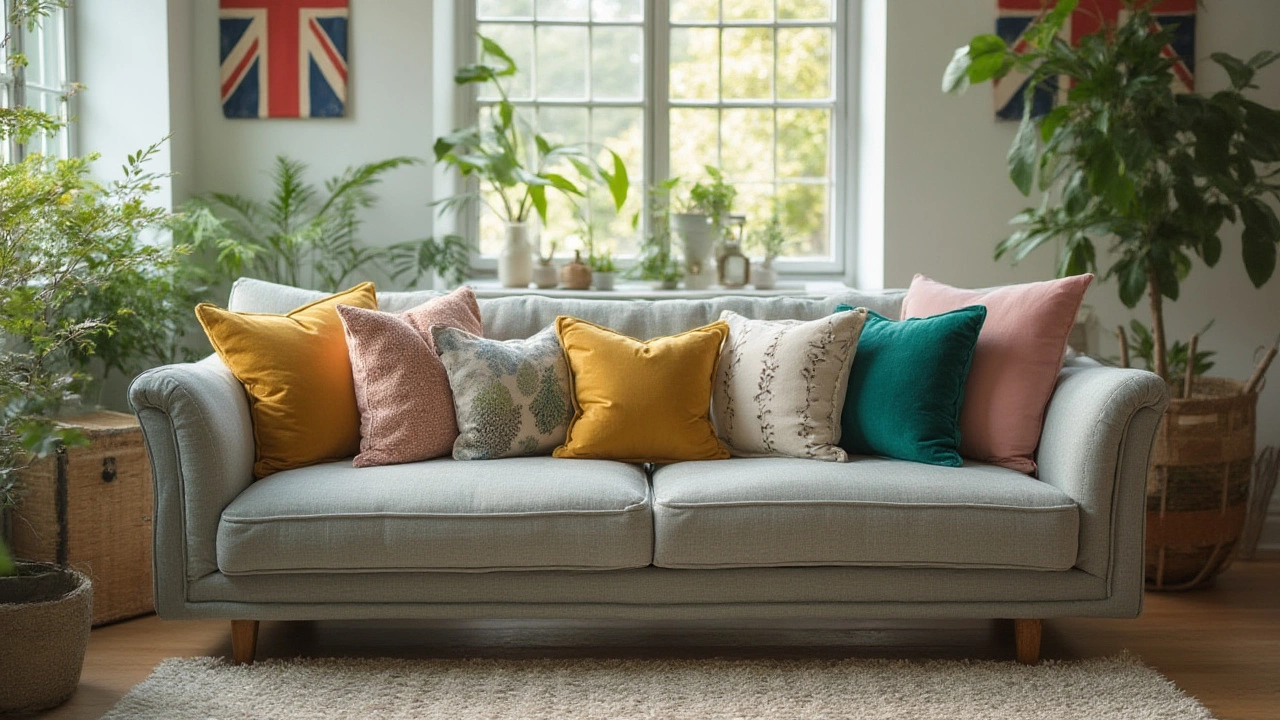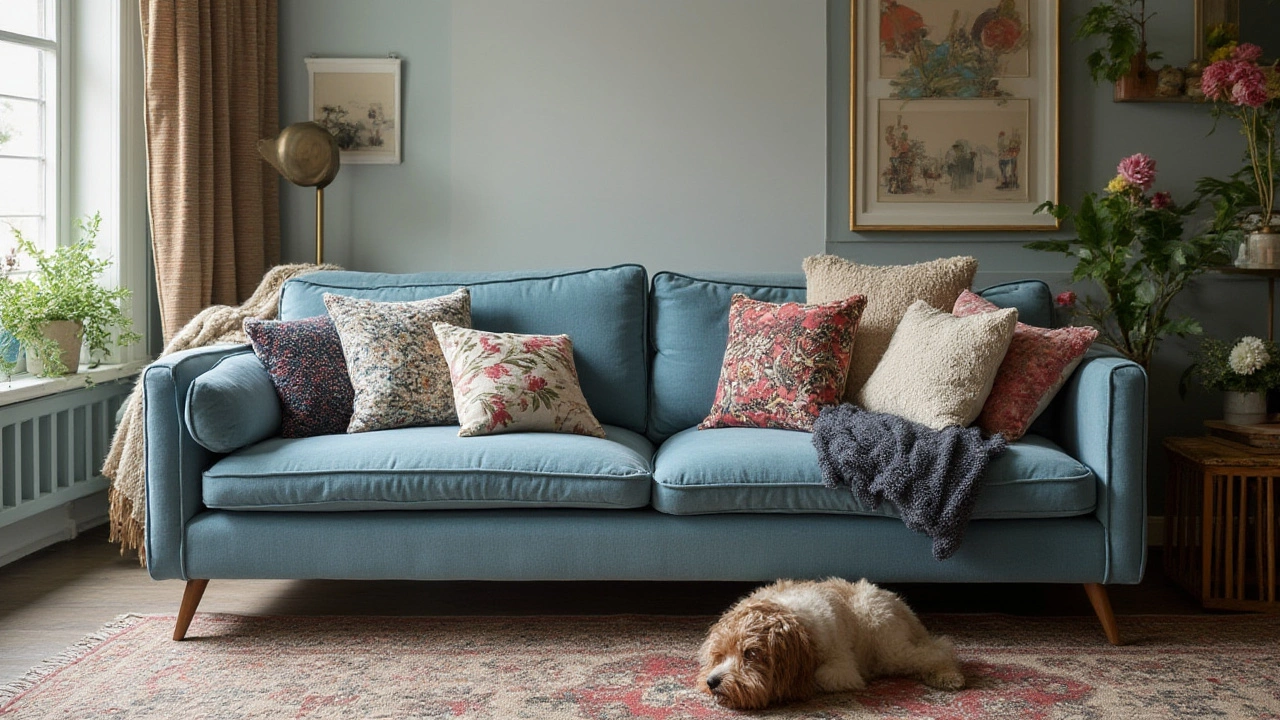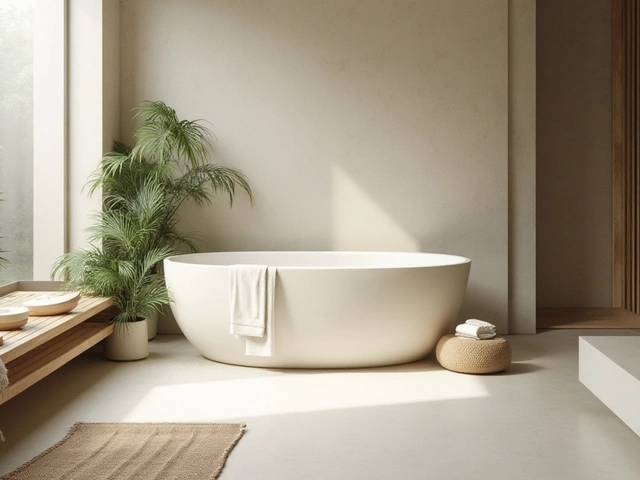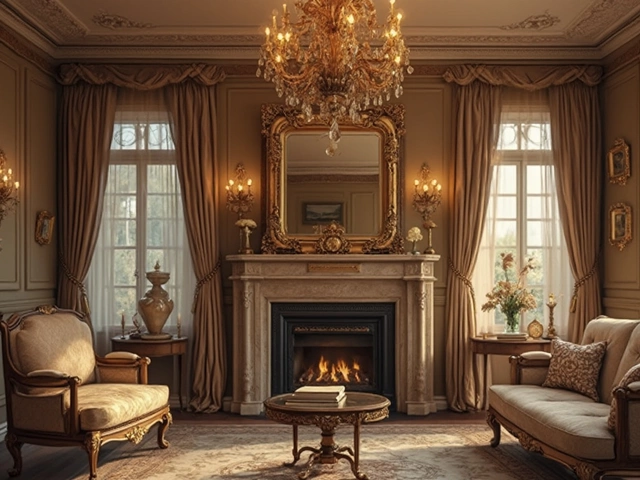How to Style a 3-Seater Couch with Cushions: Tips, Layouts & Designer Ideas

Ever plopped down on a couch that just feels right? Odds are, the secret sauce was a killer cushion setup. Cushions do more than offer you a comfy hug at the end of a long day. They set the vibe, tell a story, and seriously upgrade your living room’s look—without breaking the bank. Styling a 3-seater couch with cushions isn’t just about tossing a few pillows and calling it a day, either. There’s a method to the magic.
Understanding Your 3-Seater Couch: Scale, Shape, and Function
Let’s start with what you’re working with. A standard 3-seater couch usually spans about 84 inches, though some run a bit smaller or larger. This size gives you plenty of room to get creative but also needs balance—it’s easy to overdo the cushions and drown the sofa. The mission? Use cushions to add comfort, style, and function, not clutter.
The couch’s silhouette matters too. Does yours have plush, rolled arms or a modern track arm? Is the back high and tufted or sleek and low? Classic, overstuffed models can handle more and bigger cushions, while streamlined sofas need less bulk. Sectionals still count as 3-seaters if they have a similar seating expanse; just be mindful of any corners or chaise extensions.
Consider your couch’s color and fabric. Neutral couches offer a blank canvas—perfect if you’re the type who likes to swap cushion covers every season. Darker or jewel-toned couches might crave lighter or boldly contrasting cushions, while patterned or leather couches benefit from simpler, textured pillows. Lifestyle checks in here, too. Got pets, kids, or a partner who always snacks on the couch? You’ll want durable, washable cushion covers!
Your couch’s function also influences cushion style. Is this the showpiece of the living room? A cozy TV-napping hub? Or somewhere in between? If you host often, you’ll want visually inviting arrangements that still leave room for someone to sit without rearranging a fortress of pillows. If your sofa lives in a high-traffic family room, look for fuss-free cushions that hold their shape and look good even after a good flop.
Pro tip: Always measure your available back and seat space. Lay ruler to furniture so you don’t end up with cushions that overwhelm or get lost. Surprisingly, according to a recent survey by The Spruce, 60% of homeowners regret buying cushions that are the wrong size for their sofa. Start right—then let your creative side loose.
Choosing the Right Cushions: Size, Fill, and Material
The ‘right’ cushion for your sofa is the one that suits both your style and your life. Let’s get practical with the main points: size, fill, and material. For a classic 3-seater, most stylists swear by the 20 x 20 inch throw pillow as the backbone. These are big enough to make a statement, not so big that you’re forever clearing the couch to sit down. Layering? That works too. Place a 22 x 22 inch cushion at the back, pairing it with a 18 x 18 in front gives subtle drama and stops it from looking overly symmetrical.
Don’t forget about fill—feather/down mixes give the plushest, squishiest look (hello, ‘chopped’ karate-fluff pillows), while polyester or foam holds its shape and needs less fluffing. If you’re allergic or vegan, there are hypoallergenic synthetic fills that work just as well. Cushion inserts matter more than you think: a high-quality insert keeps your setup inviting for years, while cheap ones get lumpy and sad, fast.
The outer shell is where you show off your taste. Linen and cotton covers breathe easy and are wash-friendly. Velvet catches and reflects the light, adding instant glam. Leathers or faux-leathers give a sleek, clean edge but aren’t the best for afternoon power naps unless you like sticking to the pillow. Chunky knits, boucle, or woven covers give a cozy, tactile feel—which is on trend as of 2025 after making waves last season on Instagram and in every home decor influencer’s feed.
Mixing up these elements wakes up your room. Try contrasting one sleek, plain pillow with another that sports fringe, tassels, or embroidered details. There’s no hard rule, except one: Quality always trumps quantity. Two plump, well-made cushions beat six limp ones every time.
Need a little data boost? According to a poll by Apartment Therapy, homeowners who invest in two sets of cushion covers—one for spring/summer and one for autumn/winter—report higher satisfaction with their spaces, with over 75% saying it keeps their couch feeling ‘fresh’ year-round. Little changes, big vibes.

Cushion Arrangements: Patterns, Placement, and Practical Styling
So how do you actually arrange these cushions for maximum impact? The most popular approach for a 3-seater is the ‘classic 2-2-1’ layout—two cushions on each end, and a statement pillow in the center. This symmetrical structure is pleasing to the eye, feels balanced, and always works. For a softer, less formal vibe, try three cushions on one end and two on the other. Then, angle or slightly overlap the pillows; stuffiness is out, relaxed layering is in.
Pattern mixing is where your couch really comes to life. The safe formula? Stick to a trio: one solid, one large-scale print, one subtle or textured design. Or swap the order depending on what you love. If you have a boldly colored or patterned sofa, go for neutral or tone-on-tone pillows. Neutral couch? Play with saturated velvet, watercolor florals, or geometric prints. The visual trick is to anchor busy patterns with a simpler middle cushion—it draws the eye without overwhelming.
Always vary scale. For example, pair a bold stripe with a small herringbone or fine grid, then add a solid color pillow. Keep your color story tight: aim for two or three shades that vibe together, pulling from your rug, artwork, or curtains for inspiration. Designers call this ‘the rule of three’—it helps everything feel cohesive, not scattered.
If you’re into trends, look for throw pillows with abstract prints or organic forms. Earth-toned velvets—think ochres, sage greens, and dusty rose—are everywhere in 2025. Tufted cushions and embroidered motifs are having a moment, too, showing up in both budget shops and high-end boutiques. Don’t rule out lumbar pillows; that long, narrow shape is perfect for breaking up a sea of squares.
Placement isn’t just about looks; it’s about comfort. Pillows should invite you to flop down, not perch nervously on the edge. Leave space for someone to actually sit. Fluff and ‘chop’ (that little crease at the top) only if you like it—no rules here! Need a quick mood change? Rotate your cushions so the bolder color is front and center—super easy if your covers are double-sided.
Check out the cushion combo stats below (gathered from a 2024 home styling survey):
| Arrangement Style | Popularity (%) | Best For |
|---|---|---|
| 2-2-1 (Symmetrical) | 42 | Traditional, formal rooms |
| 3-2 (Asymmetrical) | 28 | Modern, casual rooms |
| Edge Only | 17 | Minimalist, small spaces |
| Scattered | 13 | Boho, eclectic spaces |
If you want a shortcut: Shop for cushion sets in odd numbers (usually 3 or 5). They’re designed to mix well and ensure your couch looks styled, not random.
Tips for Freshening Up and Keeping It Real
Ready to keep that setup looking fantastic day in, day out? Start by washing or airing out your cushion covers regularly. City dwellers, especially—dust can build up fast. Rotate inserts and give them a fluff every few days. For velvet or heavy textures, a quick steam or light brush keeps them perky and new.
Switch up your layout every season. Light linens and bright hues for spring and summer, chunky knits and jewel tones for autumn and winter. This doesn’t just refresh your couch, it keeps your whole living room feeling new—without buying a new sofa. Many stylists snag bargains in the clearance and off-season aisles; it’s possible to build up a ‘pillow wardrobe’ for less than the price of one high-end cushion.
If you’re short on storage, opt for double-sided or reversible covers. Same insert, two looks—genius! Or pick out one statement cushion, like a hand-embroidered number or a designer velvet one, and keep everything else simple. Splurge on quality, not quantity. A single, perfectly chosen pillow can make your couch look expensive, even if you bought it secondhand off Facebook Marketplace.
Pillow talk isn’t just about looks—good cushions make a real difference to how a room feels to live in. People spend an average of four hours a day on their living room couch (according to a 2023 survey by Homes and Gardens)—why not make that space somewhere you love?
So go ahead, mix those colors, test out weird patterns, and move the pillows around till it just feels right. The only real rule: 3 seater couch cushions should make you smile every time you walk by. That’s real style, no matter what’s trending on Instagram.





